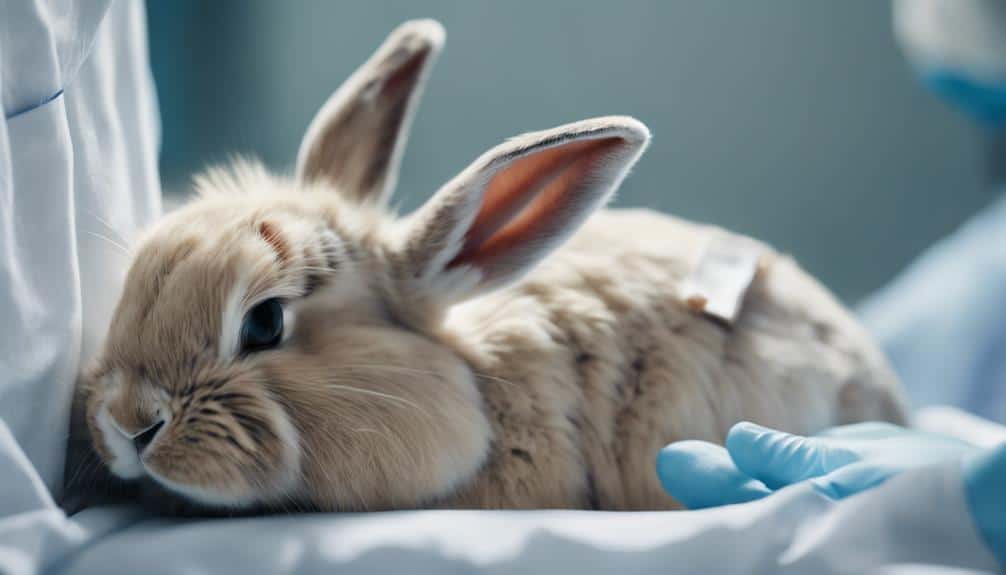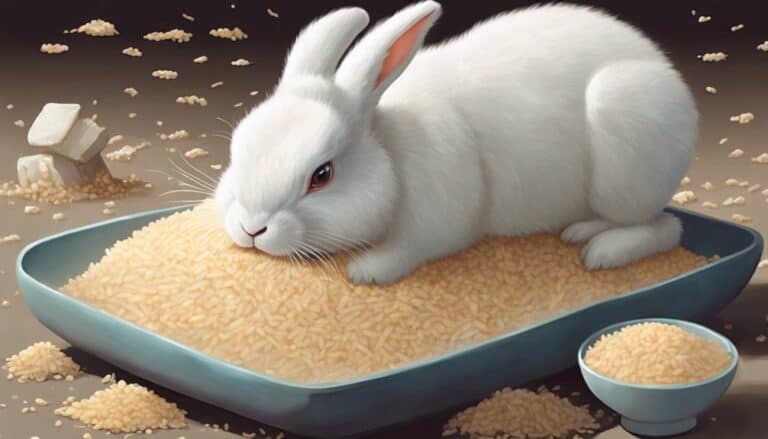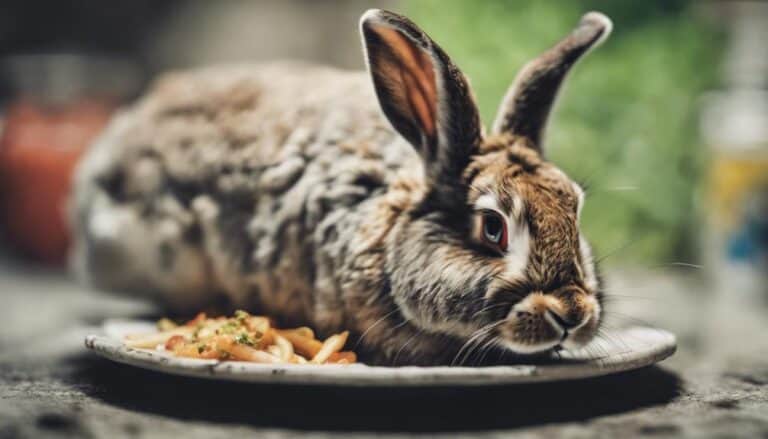So you're wondering how long neutering surgery takes for a female bunny? The answer might surprise you. The time it takes for this procedure can vary based on several factors that influence the complexity of the surgery.
These factors can include the bunny's age, size, and health. For instance, if your bunny is older or has some health issues, the surgery might take a bit longer. The surgeon's experience and the type of anesthesia used also play a role in determining the duration of the surgery.
On average, neutering surgery for a female bunny can take anywhere from 30 minutes to a few hours. But don't worry, your vet will be able to give you a better idea of what to expect based on your bunny's individual needs.
Understanding these variables and their impact on the surgery duration is essential for ensuring a smooth and successful outcome for your furry friend.
Contents
Key Takeaways
So, you're wondering how long neutering surgery takes for a female bunny? Well, the good news is that spaying a female bunny is a relatively quick process, typically taking around 30-60 minutes.
However, it's essential to keep in mind that the surgery time can vary depending on factors like the vet's experience and the size of your bunny.
After the surgery, it's crucial to monitor your bunny's behavior and watch for any changes. Also, keep an eye on the incision site to ensure it's healing properly.
Be on the lookout for signs of infection, such as redness, swelling, or discharge, and make sure your bunny is eating normally. If you notice anything unusual or have concerns, don't hesitate to reach out to your vet for help.
The recovery process usually involves an overnight stay at the vet's clinic, pain management, and follow-up visits to ensure everything is going smoothly.
Surgery Duration for Female Bunnies

Spaying a female bunny typically takes between 30 to 60 minutes, depending on how complex the procedure is and how experienced the vet is. This surgery, also known as an ovariohysterectomy, involves removing the ovaries and uterus of female rabbits.
The surgery is usually done under general anesthesia, so the bunny doesn't feel any pain or discomfort during the procedure. After the surgery, the female bunny will need some time to recover and be monitored. This usually means spending the night at the vet's clinic for observation before going home the next day.
The vet will give you detailed instructions on how to take care of your bunny after the surgery, including managing pain and taking care of the wound. It's really important to follow these instructions carefully to help your bunny heal properly.
You'll also need to take your bunny back to the vet 7-10 days after the surgery to check on how they're doing, remove any stitches or staples, and address any concerns that might come up.
Factors Affecting Surgery Time
Several factors can influence the duration of a spaying surgery for female bunnies. For instance, the surgical experience of the veterinarian plays a significant role. A vet who has performed many spaying surgeries on rabbits will likely be more efficient and complete the procedure faster.
The size and age of the bunny are also important considerations. Larger or older bunnies may require more time for the surgical procedure, which can extend the overall duration of the surgery.
Additionally, potential complications that arise during the procedure can significantly impact the surgery time. If the vet encounters any issues, it will take longer to complete the surgery.
In some cases, the presence of conditions like uterine adenocarcinoma may require more intricate surgical care, leading to longer operation times. Furthermore, making a precise incision is crucial to minimize post-operative pain and promote faster healing.
Here's a breakdown of the key factors that affect surgery time:
| Factors | Description | Influence |
|---|---|---|
| Veterinarian Experience | Experienced rabbit surgeons are likely to perform surgeries more efficiently | Shorter surgery durations |
| Bunny's Size and Age | Larger or older bunnies may require more time for the surgical procedure | Longer surgery durations |
| Potential Complications | Complications during surgery can extend the time needed for the procedure | Prolonged surgery durations |
Understanding these factors can help in estimating the time needed for a female bunny's spaying surgery and ensuring proper care during the surgical process.
Monitoring Post-Surgery Recovery
Monitoring your bunny's recovery after surgery is crucial. Keep a close eye on any changes in their behavior or appetite. Your rabbit might feel uncomfortable after neuter surgery, but don't worry, the pain medication prescribed by your vet can help.
Check the incision site regularly to make sure it's healing properly and doesn't show any signs of infection. Also, monitor your rabbit's body for any abnormalities or swelling around the surgical area. It's essential to encourage your bunny to eat and drink as usual, as a healthy diet and staying hydrated are vital for a smooth recovery.
Watch out for any signs of illness, such as lethargy, loss of appetite, or abnormal discharge. Remember, spaying or neutering your bunny not only prevents unwanted litters but also reduces the risk of reproductive cancers. By keeping a close eye on your bunny's post-surgery recovery, you can help them heal quickly and maintain their overall well-being.
Potential Complications to Watch For
After your female bunny's neutering surgery, keep a close eye out for potential complications. While they're rare, it's crucial to monitor your rabbit's welfare.
First, make sure your rabbit gets the right pain meds and follows the vet's pre-surgery instructions. Then, keep an eye on the surgical site for signs of infection like redness, swelling, or abscesses. Also, watch for changes in your rabbit's behavior, appetite, or stool quality after the surgery. These could be signs of complications.
If you notice anything concerning, get veterinary advice ASAP to prevent further issues. Remember, catching potential complications early can make a big difference in your bunny’s recovery. So, prioritize your rabbit’s well-being by staying alert and proactive in monitoring for any signs of distress or irregularities. Additionally, it’s essential to maintain a balanced diet that supports rabbit eye health and vegetables, ensuring they receive the necessary nutrients to thrive. Regularly incorporating fresh greens and high-quality hay can significantly benefit their overall well-being. By being attentive to their dietary needs, you can help prevent potential health issues before they arise.
Expected Recovery Timeline

The procedure itself usually takes a day, and your rabbit will need to stay overnight at the hospital for monitoring and initial healing.
After the surgery, it's crucial to keep a close eye on your rabbit for any signs of pain or illness over the next few days. She might want to be left alone, so respect her need for rest and make sure she's plenty of fresh grass-hay and water within reach.
Managing your rabbit's pain is vital for her comfort and healing. Give her the prescribed medication at the right dosage, and adjust as needed based on her recovery progress. Keep an eye on her eating habits and overall recovery overnight, making sure she's eating and drinking enough.
You'll typically need to take your rabbit back to the vet about a week after surgery to confirm she's healing properly and address any concerns. By following these recovery guidelines, you can help your rabbit heal comfortably and successfully after her spaying procedure.
Conclusion
The surgery to spay a female bunny usually takes between 30 to 60 minutes.
This timeframe can vary depending on a few factors, like the vet's experience and the bunny's size.
If there are any complications, it'll take longer.
After the surgery, it's crucial to keep a close eye on the bunny as she recovers.
You want to catch any potential complications early on.
The spaying process is a delicate procedure that requires precision and care to ensure the bunny's health and well-being.





